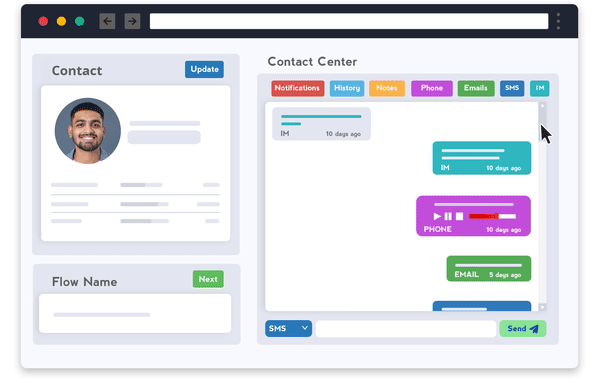
Data-Driven Insights for Improving Productivity with Optimum Messaging
Contact centers are under constant pressure to improve their productivity and efficiency. One of the key ways to achieve this is through the use of Optimum Messaging, which enables contact center agents to communicate with customers quickly and effectively.
However, to truly optimize messaging and improve contact center productivity, organizations need to rely on data-driven insights. In this article, we will explore the role of data in improving contact center productivity through Optimum Messaging.
What is Optimum Messaging and How Does it Improve Productivity?

Optimum Messaging is a messaging solution that helps contact center agents communicate with customers via different channels, such as email, social media, and SMS, among others. It allows agents to respond to customer inquiries quickly and efficiently, reducing response times and enhancing the customer experience. Solutions are typically cloud-based, allowing for scalability, flexibility, and easy integration with other systems.
Data plays a critical role in improving contact center productivity. By analyzing customer data, Optimum Messaging can gain insights into customer preferences, behavior, and pain points, which can help them tailor their messaging strategies and provide more personalized customer experiences.
Furthermore, by analyzing agent data, contact centers can identify areas for improvement, such as training needs or process inefficiencies. This data-driven approach can help contact centers optimize their messaging strategies and improve productivity.
Best Practices for Leveraging Data for Optimum Messaging

To truly leverage data for Optimum Messaging and improve contact center productivity, organizations should follow best practices, such as:
- Collect and analyze customer data: Gather and analyze customer data, such as demographic information, purchase history, and interaction data, to gain insights into customer behavior and preferences.
- Analyze agent data: Analyze agent data, such as call handling times and customer satisfaction ratings, to identify areas for improvement.
- Use data to tailor messaging strategies: By leveraging customer and agent data, contact centers can tailor their messaging strategies to provide personalized customer experiences and improve productivity.
- Monitor and measure performance You should track key performance indicators (KPIs) related to Optimum Messaging, such as response times and customer satisfaction ratings, to monitor performance and identify areas for improvement.
Conclusion
Optimum Messaging is a powerful tool for improving contact center productivity, but to truly optimize messaging and enhance the customer experience, organizations need to rely on data-driven insights. By analyzing customer and agent data and following best practices, businesses can tailor their messaging strategies, improve productivity, and provide better customer experiences.